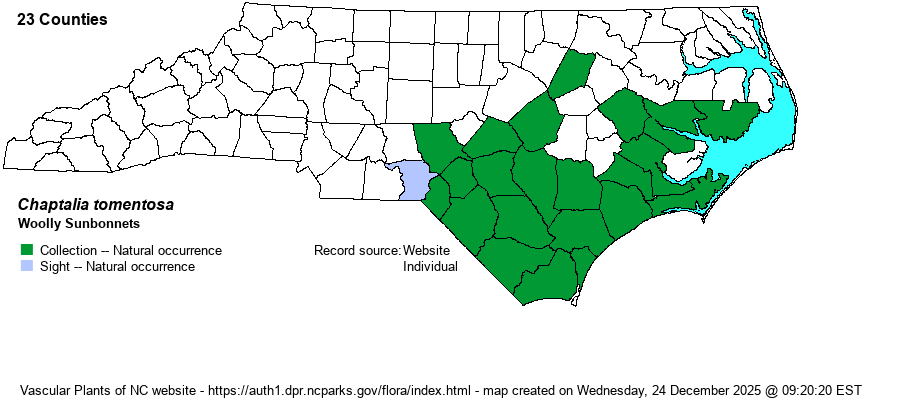| Author | Ventenat | |
| Distribution | Coastal Plain (including the Sandhills); absent from the northern and northeastern portion of the state; ranges north only to Nash, Pitt, Beaufort, and Hyde counties.
Coastal Plain, NC to southern FL and eastern TX; reported from Hispaniola. | |
| Abundance | Fairly common to locally common in the lower Coastal Plain where Longleaf Pine (Pinus palustris) stands are present. Fairly common at least locally in the Sandhills, but uncommon elsewhere in the range in NC. | |
| Habitat | Moist to wet Longleaf Pine savannas and flatwoods, pitcher-plant seepages, blackwater streamhead ecotones. |
| Phenology | Flowering and fruiting late March-May. | |
| Identification | Woolly Sunbonnets consists of basal leaves that are more-or-less flat to the ground, plus 1-2 leafless stems 5 inches to a foot tall. Each stem terminates in a nodding (in flower) to erect (in fruit) head with white rays and disks; however, the backs of the rays are pink to purplish. Each flower is about 1-inch across. Leaves are bright green and smooth above, densely but very short, white pubescent beneath. This is a very distinctive plant in leaf and in flower, especially in its spring blooming period (for an "aster-looking" species). | |
| Taxonomic Comments | None
| |
| Other Common Name(s) | Pineland Daisy | |
| State Rank | S4 | |
| Global Rank | G5 | |
| State Status | | |
| US Status | | |
| USACE-agcp | FACW link |
| USACE-emp | FACW link |

